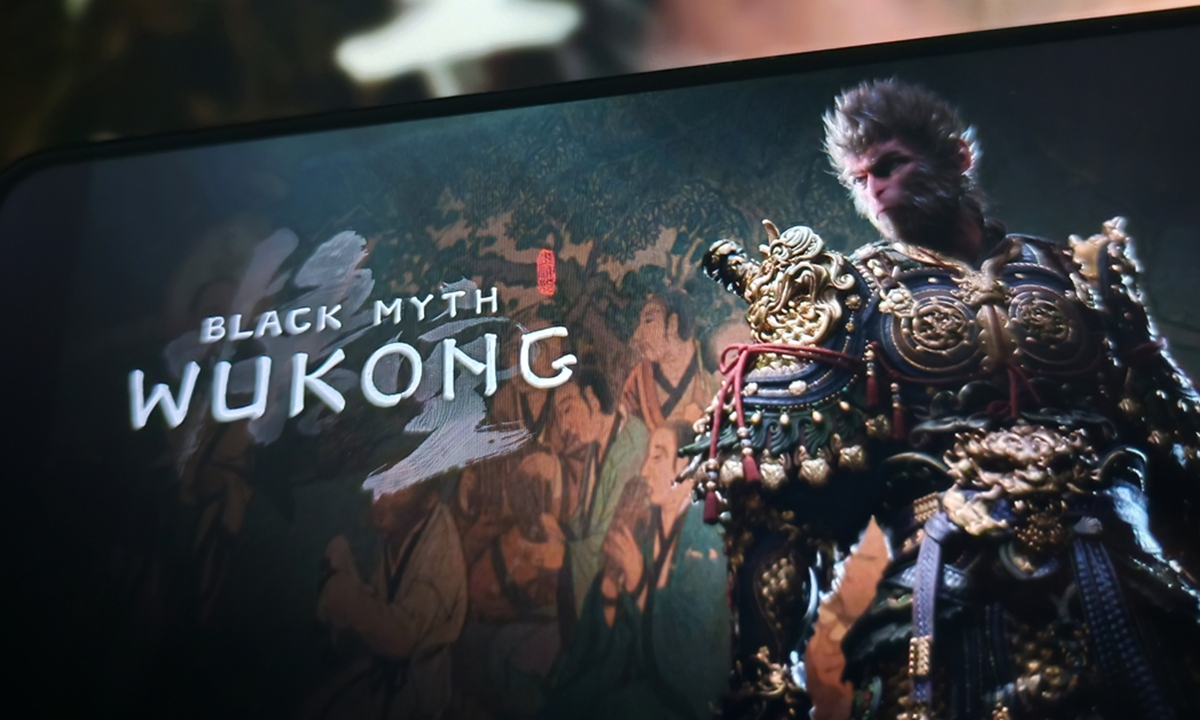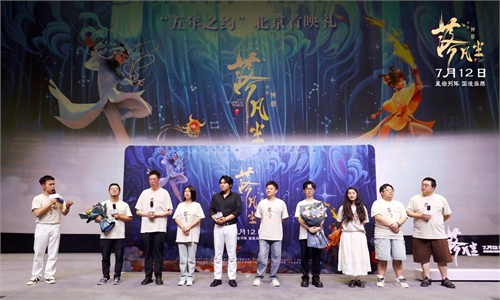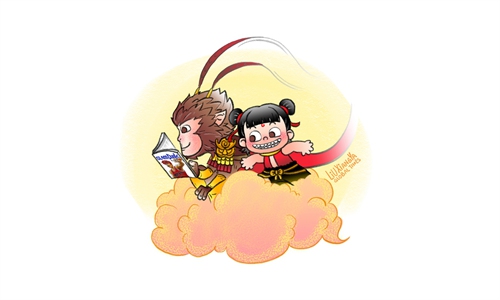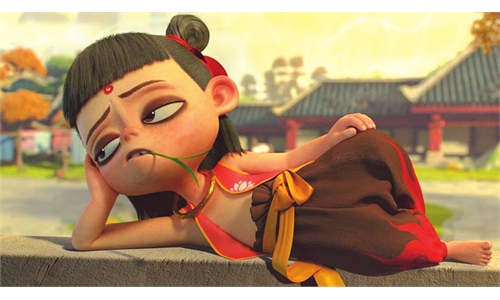ARTS / VIDEO GAMES
Showcasing Chinese fine arts through hit game ‘Black Myth: Wukong’

Promotional material for Black Myth: Wukong Photo: VCG
Ink wash painting, along with gongbi, a careful realist technique in Chinese art, and many other elements of traditional culture are beautifully showcased in the recent release of six ending cutscenes from the hit game Black Myth: Wukong. Available on the domestic and overseas platforms, this collection perfectly demonstrates the beauty of Chinese fine arts via today's most popular media channels.The video game consists of six chapters, each featuring a short animated cutscene at the end that either provides background information or deepens the story's themes. Each cutscene has its own unique style ranging from traditional animation to stop-motion and each is rich in Chinese cultural elements, sparking extensive discussion online.
On BiliBili, the cutscene collection has a 9.9/10 rating, over 10 million views, and more than 10,000 comments as of Tuesday.
In the first chapter, I See, the visuals exhibit a cinematic quality. The cutscene was created by Fliiip Design, a Shanghai-based studio known for its work on various Chinese-style animations.
Director Lin Zhe deviates from conventional interpretations of Chinese-style animation. He opted for a look reminiscent of 1980s and 1990s films, drawing inspiration from directors such as Tsui Hark and Wong Kar-wai.
To emphasize local characteristics in character design, he also referenced works from numerous traditional comic artists, resulting in a visually stunning final product.
In the second chapter, Deaf Ear, the highlights primarily lie in its production techniques. This cutscene was created using stop-motion animation, a painstaking process involving moving puppets and taking frame by frame pictures to create the feeling of motion. Due to the structural limitations of puppets, achieving detailed facial expressions has been challenging.
For instance, in one scene a fox transforms into a girl. For this, the production team used porcelain beads for the girl's eyes. Beyond the characters, the production team also explored new techniques for environmental effects.
Of particular note is the third chapter, Nonsense!, which employs stark black-and-white ink-wash visuals to depict a fishing village. A haunting female vocal track creates a profound auditory experience that complements the film's imagery. The final chapter, Unfinished, utilizes the traditional gongbi technique to portray scenes with breathtaking detail.
In creating elements like clouds, water, and fire, Yang drew on a wealth of classic animation techniques from previous classic animated works. By synthesizing the experiences of previous artists, he crafted a work that is rich in Chinese cultural resonance.
The classic novel Journey to the West, upon which the video game is based, has held significant importance in the history of Chinese animation.
In recent years, the animated film Monkey King: Hero Is Back reignited interest in domestic animation. Now, with Black Myth: Wukong, we are witnessing a new generation of animators continuing to inherit and promote Chinese culture. The cutscene collection signals the global potential for China's animation industry, as long as it remains rooted in its unique traditions while embracing innovation.



